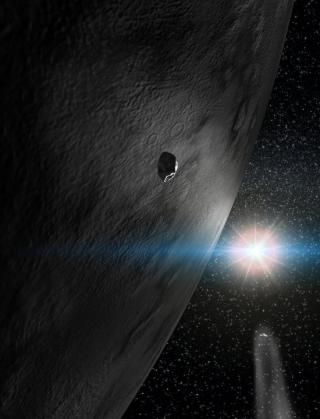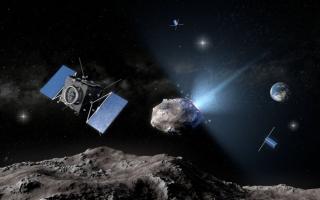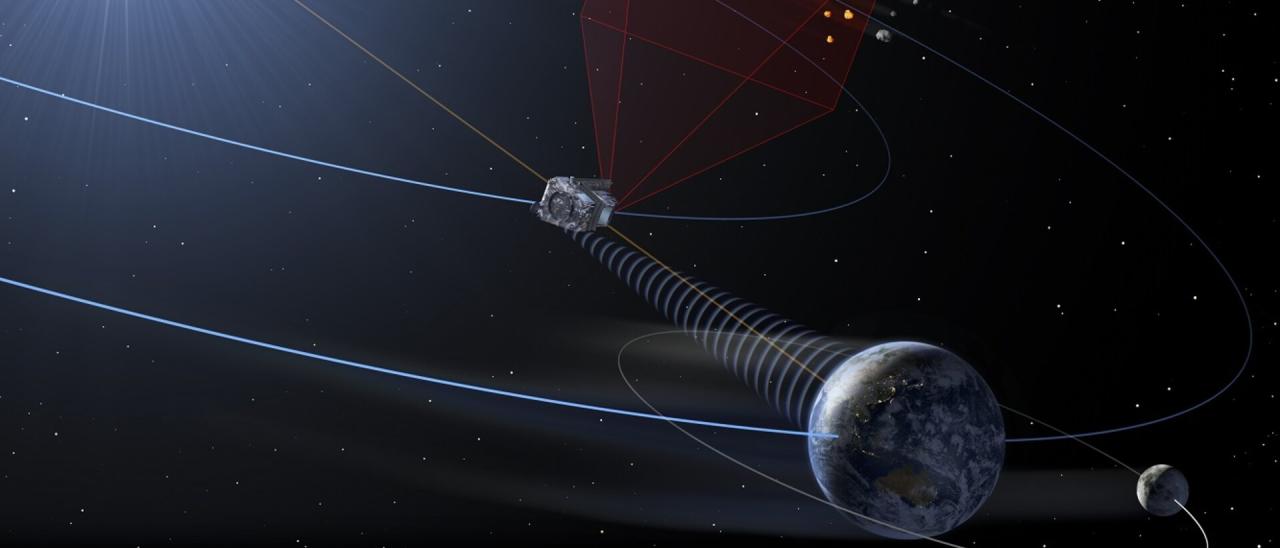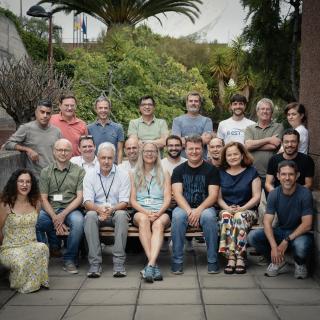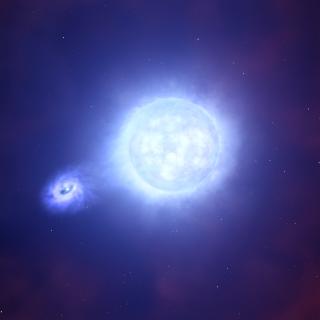The mission is part of the planetary defence strategy of the European Space Agency (ESA)
The Instituto de Astrofísica de Canarias (IAC) is hosting this week the meeting of the Scientific Advisory Group (SAG) linked to ESA's NEOMIR (NearEarth Object Mission in the InfraRed) mission, which aims, among other things, to create a system for detecting near-Earth asteroids using a space telescope.
The mission is part of the planetary defence strategy of the European Space Agency (ESA), which has set a possible launch date of 2030, using an Ariene 6-2 rocket.
SAG coordinator and IAC researcher Javier Licandro points out that at present "all those asteroids that come from the direction of the Sun cannot be seen". To solve this problem, this ESA mission will place the telescope between the Sun and the Earth. Being located outside the Earth's atmosphere and with the ability to observe in infrared light, NEOMIR will detect the heat emitted by the asteroids themselves, which not only facilitates their detection, but also makes it possible to determine their size, a fundamental parameter for determining the effects in the event of a collision with the Earth.
The SAG coordinator said that they are considering using a different detection method called Synthetic Tracking, which would facilitate the detection of these "very fast-moving" objects.

Luca Conversi, a member of ESA and the project's top representative, explains that more images of the same field must be taken, allowing time to detect moving bodies in order to distinguish asteroids from, for example, stars.
The objects to be detected with this telescope are at least 20 metres in diameter and do not pose a global threat to life on Earth, but could have an effect on the population and infrastructure at the impact site. Their early detection would allow the authorities to take appropriate safety measures to mitigate these effects. It is estimated that the instrument could detect them an average of one month in advance, or up to three days in the worst case. Licandro envisions the mission as "an early warning network for small body impacts".
The space telescope is designed to operate for a total of seven years with a possible extension of another five years. Its commissioning will bring benefits in other areas, such as mapping all the dust in the Sun's ecliptic zone, and characterising the population of asteroids and comets orbiting in the Sun's vicinity. "It will look at a region of the sky that, at least in the last 30 years, no instrument, neither in the sky nor on Earth, has looked at," says Conversi.
The SAG is represented by centres and universities from different countries, and includes the Centres and universities from different countries are represented in the SAG, including Javier Licandro from the IAC, Karry Muinonen from the University of Helsinki, Thomas Müeller from the Max Planck Institute for Extraterrestrial Physics, Alan Fitzsimmons from Queen's University Belfast, Paolo Tanga and Marco Delbo from the Observatory of the French Riviera, and Marcel Popescu from the Astronomical Institute of the Romanian Academy.

